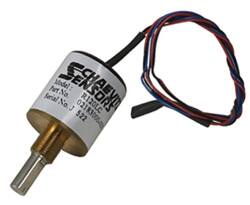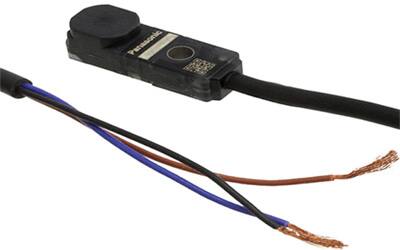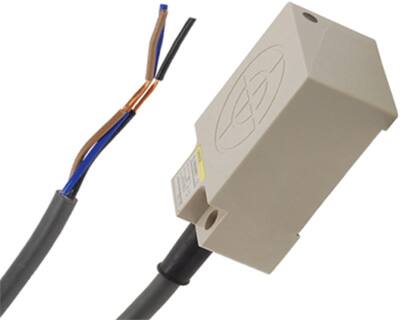Inductive Sensor Solutions for Industrial and Hazardous Settings
投稿人:电子产品
2013-12-12
Inductive sensing as a technology is widely used in industrial and non-industrial applications and trusted solutions have been on the market for a long time. However, while inductive sensing is not new, advances continue unabated. Recently, headlines splashed news of the industry’s first inductance-to-digital converter for position and motion sensing. This announcement unveiled low-cost detection of metal and conductive items in the presence of dust and dirt, and did so with sub-micron resolution, an important technical achievement.
Inductive sensors are those that detect metallic objects without coming in direct contact. Instead, they generate and use a high-frequency oscillating magnetic field. An inductive proximity switch is equipped with a resonance circuit with a capacitor and coil to produce the required high-frequency magnetic field at the sensor’s surface. The metal target entering the sensing field induces eddy currents in the target, which reduces the signal amplitude of the oscillator. The detector circuit then recognizes the specific change in amplitude and generates a signal which will turn the solid-state sensor output “on” or “off.”
Given the non-contact nature of the inductive sensor, their claim to fame (or one of them) is that there is no mechanical wear when used. Another is that they operate well in extreme conditions, those often present in industrial settings and in automotive, chemical equipment, outdoor or hazardous applications.
Featuring 2-, 3-, 4-wire DC, AC, NAMUR, and AS-Interface interfaces, inductive sensors provide a long operating life combined with being extremely robust and reliable.
Inductive sensors are built from a variety of materials, metal and synthetic, and come in many sizes and shapes, all of which affects their effective distance. In particular, the composition of the target has a large impact on the sensing distance of inductive proximity sensors. If a typical target for the sensor is made of mild steel to determine the sensing distance for materials other than steel, a correction factor is used. The engineer has to multiply the nominal sensing distance by the correction factor listed in order to determine the nominal sensing distance for that target.
In this article, we will look at inductive position and proximity sensors, explain how they work, and provide examples of both.
Position sensing
Position sensors measure linear or angular position relative to a fixed point or arbitrary reference point. They measure distance and displacement, a change in position. This measurement information is then processed with an external circuit to count events, monitor physical conditions, control processes, and more.
An example of an inductive position sensor is the R120LC Series by Measurement Specialties (Figure 1), a DC-operated noncontact rotary transducer. The R120LC proprietary design incorporates a set of printed-circuit coils and a conductive spoiler that achieves high performance with a low price tag.

The R120LC is very resistant to environmental disturbances, and by using non-contacting technology, it does not suffer the wear problems experienced by potentiometers. Features include a wide operating temperature range, infinite resolution, and a virtually infinite rotational life.
Key specifications include:
- Full range: ±60°
- Input voltage: 4.75-5.25 V
- Output voltage: 0.5-4.5 V
- Maximum input current: 21 mA
- Maximum output current: 5 mA
- Output impedance: <10 Ω
- Frequency response: 200 Hz at -3 dB
- Linearity error: ±0.5% of full-scale output
- Maximum nonrepeatability and hysteresis: 0.1% of full-scale range output
- Storage temperature range: –65° to 250°F (–55° to 125°C)
- Operating temperature range: –40° to 185°F (–40° to 85°C)
- Lead wires: 24 AWG, PVC insulation, 4 wire, minimum 12 in. long
Inductive proximity sensors on the other hand, detect the presence or absence of an object rather than its position. When selecting inductive proximity sensors, datasheets provide information on specified shapes, sizes, and material used as the standard. This information is critical to understand the performance of the proximity sensor, and is important as distance will be different based on the shape and material. What is often used as a standard detectable object is a 1 mm thick iron plate. The size and shape of the target may affect the sensing distance. Flat targets are preferable, while rounded targets may reduce the sensing distance. It also should be noted that ferrous-selective sensors will not detect brass, aluminum or copper, while nonferrous selective sensors will not detect steel or ferrous-type stainless steels.
The distance of the inductive proximity sensor to a target is measurable when a standard detectable object is moved in front of the sensor in a defined way, aligning the center line of the sensor with the center line of the object. The maximum operating distance is found to be where a sensor detects the object even when supply voltage fluctuation or ambient temperature drift exists; typically it is 70 to 80% of the maximum operating distance stated.
The GX-F/H Series of rectangular-shaped inductive proximity sensors by Panasonic Industrial Automation (Figure 2) is said to have the longest stable sensing range among the same level of rectangular inductive proximity sensors in the industry.

Thorough adjustment and control of sensing sensitivity greatly reduces individual sensor differences and variations. This series makes it easy to adjust sensor positions when using multiple sensors and when sensors are replaced. Variation at the maximum operating distance and temperature characteristics variation are within ±8 percent.
Applications include muting control of light curtains, positioning processing equipment, and positioning metal pallets. Advantages include 10 times the durability over previous models. According to Panasonic, a new integrated construction method used provides shock resistance of 10,000 m/s², and vibration resistance clears durability tests of between 10 and 500 Hz (3 mm (0.118 in.) amplitude in X, Y, and Z directions for 2 hours each). In addition, resistance to impulse noise is approximately three times greater than for previous models. Other features include indicators that are easy to see over a wide field of view, double conductor thickness which provides for easier wiring, and the sensors are highly resistant to water or oil.
Omron’s TL-W flat inductive proximity sensor family (Figure 3) offers a wide range of block-style options for simple mounting on flat surfaces. With sensing distances from 1.5 to 20 mm, the TL-W is the solution often used in standard applications.
Features include front- and side-facing surface, the availability of IP67, DC 2- and 3-wire models, and sensing distances that range from 1.5 to 20 mm. The family also includes aluminum die-cast models.

Millions of inductive position and proximity sensors are found in industrial settings, machine construction, automated processes, warehouses, and conveyor systems. The sensors are low in cost and come in a wide range of materials, shapes, and sizes. They are typically very easy to implement.
For more information on the parts discussed in this article, use the links provided to access product information pages on the Digi-Key website.
免责声明:各个作者和/或论坛参与者在本网站发表的观点、看法和意见不代表 DigiKey 的观点、看法和意见,也不代表 DigiKey 官方政策。







 中国
中国